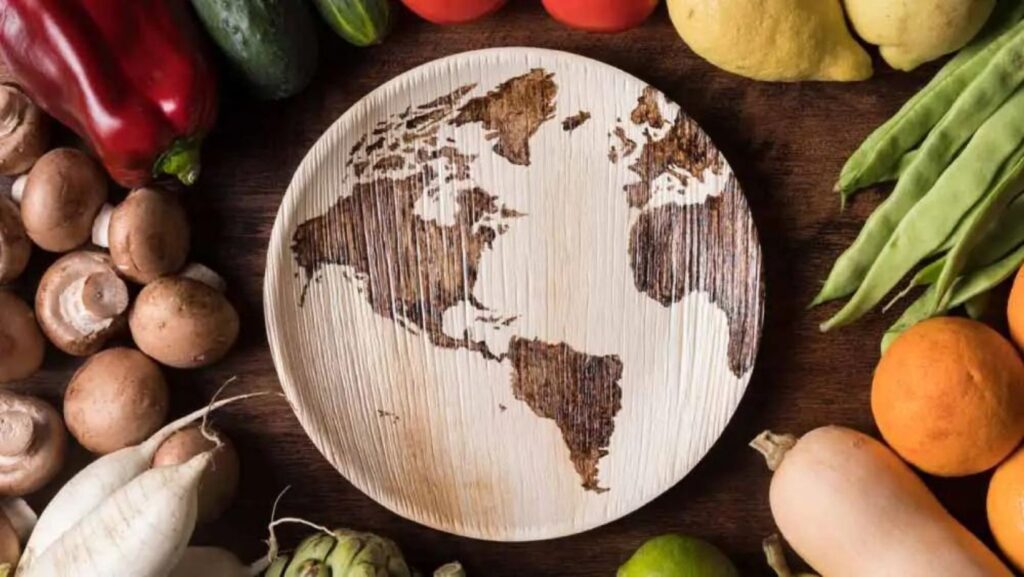Top 10 Most Eaten Food in the World
As I delve into the fascinating realm of gastronomy, exploring the diverse culinary landscape of our world, one cannot ignore the significance of food in shaping cultures and traditions. The top 10 most eaten food in the world globally offer a glimpse into the collective preferences that resonate across borders and continents.

From staple grains like rice and wheat to protein-rich sources such as chicken and beef, these foods form the cornerstone of diets worldwide. Vegetables like potatoes and tomatoes add essential nutrients while fruits like bananas and apples provide sweetness and vital vitamins.
Whether enjoyed in street food stalls bustling with locals or savored in fine dining establishments catering to discerning palates, these top 10 most eaten food in the world transcend mere sustenance; they embody a shared human experience woven through history, geography, and personal taste. As I embark on this culinary journey, I’m eager to uncover the stories behind these beloved food items that nourish billions around the globe.
Unveiling the Top 10 Most Eaten Foods Globally
As we delve into the culinary landscape of the world, it becomes evident that certain foods hold a special place in the hearts (and stomachs) top 10 most eaten food in the world of people across diverse cultures. Let’s uncover the top 10 most consumed foods globally that have transcended borders and become staples in households worldwide.

The Powerhouses of Global Gastronomy:
- Rice: A fundamental ingredient in many cuisines, rice takes the lead as one of the most ubiquitous grains on dinner tables globally.
- Wheat: Whether in the form of bread, pasta, or noodles, wheat products are a dietary cornerstone for numerous populations worldwide.
- Corn: From tortillas to popcorn, corn manifests itself in myriad forms and stands out as a versatile crop enjoyed by millions daily.
- Potatoes: Boiled, fried, mashed – potatoes offer endless possibilities and secure their position as a beloved comfort food internationally.
- Tomatoes: Found in sauces, salads, and salsas worldwide, tomatoes bring a burst of flavor to dishes across continents.
- Bananas: Portable and nutritious, bananas top the list as one of the most-consumed fruits globally.
- Apples: Crisp and refreshing, apples are not just an old adage but also a fruit cherished by countless individuals around the globe.
- Chicken: Versatile and lean protein source; chicken dishes feature prominently on menus from fast-food joints to fine dining establishments worldwide.
- Beef: Whether grilled as steak or simmered into stews, beef remains a staple meat choice for many cultures across different regions.
- Fish: With its omega-3 fatty acids and delicate flavors appealing to various palates, fish secures its spot among the top consumed proteins globally.
Each of these foods plays a significant role not only in sustaining populations but also in shaping cultural identities through distinctive preparation methods and regional variations that reflect diverse tastes and traditions around the world.
Cultural Significance of the World’s Most Popular Foods
When exploring the CULTURAL SIGNIFICANCE OF THE WORLD’S MOST POPULAR FOODS, it becomes apparent that these dishes often serve as more than just sustenance. They are deeply woven into the fabric of societies worldwide, embodying histories, traditions, and values. Take pizza, for instance – a global favorite originating from Italy. Beyond its delicious taste, pizza symbolizes sharing and community gathering. In many cultures, sharing a pizza signifies togetherness and camaraderie around a shared meal.

Moving on to sushi – a Japanese delicacy enjoyed internationally. Sushi is not just about flavors; it represents precision, artistry, and respect for ingredients. The meticulous preparation of each sushi piece reflects Japanese craftsmanship and attention to detail. It’s a culinary art form that has captivated food enthusiasts worldwide and serves as a testament to Japan’s rich culinary heritage.
In contrast, tacos hold immense cultural significance in Mexican cuisine. Tacos go beyond being a convenient handheld meal; they embody Mexico’s vibrant colors, bold flavors, and diverse regional influences. Each region in Mexico boasts its unique taco variations, showcasing the country’s culinary diversity and heritage through this beloved street food.
Exploring further into Chinese cuisine unveils the symbolic importance of dumplings. Dumplings are traditionally consumed during Lunar New Year celebrations in China as they symbolize wealth and prosperity due to their shape resembling ancient Chinese gold ingots. This tradition highlights how food can be intertwined with cultural beliefs and rituals that span generations.

